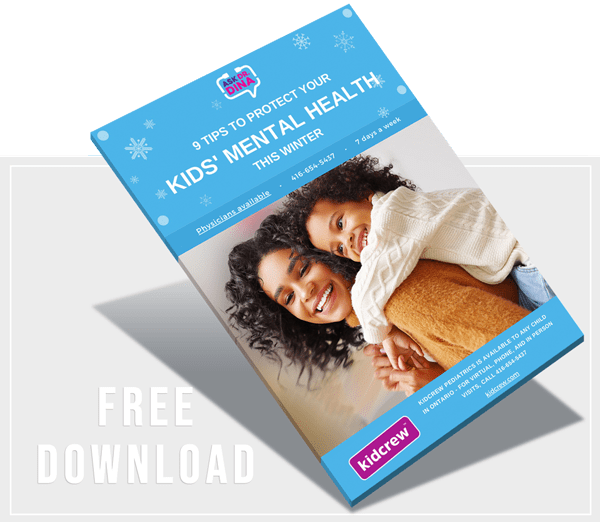Is it healthy if my child won’t eat meat?
I hear from families often that their child has decided they do not want to eat meat.
Sometimes the child was already picky with food choices, and sometimes it is due to a more profound concern for eating animals.
It is essential to know that many children and adults have nutritious diets with no meat protein. There are certain things to keep in mind when considering a vegetarian or vegan diet, but it can be done safely and healthfully.
If your child does not want to eat meat, I suggest the following:
1. Consider why your child has made this choice
Some children do not like the taste of meat proteins. Meat proteins are tough for young people, and some people just don’t like the texture. If this is the only concern, it is easy to make some simple changes to your home’s meat protein situation. Ground chicken, turkey, pork, or beef can easily make hamburgers, patties, or meatballs. Eggs are another excellent choice for protein and iron that has no chewy texture.
If your child refuses to eat meat due to ethical, environmental, or ecological reasons, consider allowing your child to make this choice, with the caveat that the diet will include everything they need to stay healthy in the absence of animal protein.
If your child has made a conscious choice to abstain from meat protein, ensure the reason is not linked to calorie restriction concerns. While meat proteins do have a generous amount of calories, this reason is one I would discuss more thoroughly to ensure your child is not facing an eating disorder, instead of beliefs and values about animals fueling their decision to change their diet.
2. Make a plan
Making a dietary change as large as eliminating animal proteins from the diet cannot be made lightly. Teamwork is required. Meal planning, shopping, and cooking needs to be thought out and prepared.
Perhaps consider leaning into the idea of vegetarianism, starting with a few days a week without animal protein instead of starting with zero. This may lead your child to decide that less animal protein feels comfortable, and the goal or no meat is not needed. This is a learning process for the whole family. Perhaps your family will learn to cook more vegetarian dishes and love them.
3. Learn, learn, learn
I’m not going to lie – learning how to prepare a vegetarian diet that includes all the necessary vitamins and nutrients a growing child needs can be challenging. But it is not impossible. It does require some education and learning.
Many families will rely on multivitamins.
While I am not averse to offering a vitamin each day, they are usually unnecessary. I would prefer kids (and adults) to receive their nutrition by way of their food instead of relying on supplements.
If your child is not picky and eats milk and eggs and a variety of other foods, vitamins are rarely required. If your child does not want to eat eggs, you must ensure an adequate intake of other iron containing foods, such as soy-based products like tofu, legumes (lentils and beans), nuts, and seeds. If your child does not want to drink animal milk, fortified milk substitutes are readily available. Watch for sugar content, though, and ensure there is enough vitamin D and calcium included.
Other vitamins to look out for are vitamin B12 and zinc. If you are unsure if your child’s diet includes these, please meet with a dietitian to review a typical day’s meals to see what might need to be added in or substituted.
4. Ensure a variety of proteins
Your child must have a varied protein and iron source. This is true for meat-eaters as well. When starting the vegetarian diet, you might want to consider counting the grams of protein ingested for a few days so you and your child get an idea of how much protein is in each food.
Once you are sure the diet includes enough protein, you can back off the counting.
Animal-based proteins such as meat, fish, eggs, and dairy are called ‘complete proteins’ containing all nine essential amino acids. Plant-based proteins usually miss at least one amino acid. Therefore, to ensure all nine essential amino acids are represented in the diet, varied protein sources are required. Legumes may have some amino acids and soy. If both are present in the diet, you are covered.
If you are substituting animal milk with milk alternatives, ensure the products you drink have protein includes. Some almond, cashew, and coconut milk have minimal or no protein, so look at nutritional labels.
When considering protein needs per day, consider the following details. Toddlers require just over 1 g/kg/day, and kids and teens need 0.9-1 g/kg/day. A young teen may weigh 45kg. This child would require around 45 g of protein per day.
Here are some protein tips:
- Eggs and dairy are protein-rich if your child will ingest these.
- Soy milk and pea milk are protein risk milk substitutes.
- Most nut and coconut milk do not contain much or any protein; review nutrition labels.
- Soy, tofu, peas, and legumes are excellent sources of protein.
- Hemp and chia seeds are excellent sources of protein in small packages.
- Quinoa and amaranth are great grains with high protein content.
5. Ensure your child gets enough fat
Your child must get enough fat in the diet. Healthy fats should represent at least 30% of your child’s diet.
This is not chips and cookies, of course.
We must ensure enough healthy fats such as healthful oils (like avocado), nuts, seeds, tofu, and avocado.
We also want to ensure your child receives enough Omega-4 fatty acids, which usually are found in fish and eggs. You can get these through flaxseeds, hemp seeds, chia seeds, and soy.
You can also add a supplement if you are concerned. Chatting with a dietitian is helpful in this regard.
6. Ensure enough iron
We spoke about protein, which many people think is the same as iron. While meats are a source of protein and iron, milk and eggs are not significant iron sources.
Toddlers and young children require 7-10 mg of iron a day, and teens need 12-15 mg a day.
Some great iron sources in the vegetarian diet include oatmeal (13 mg in one cup), dried fruits, nuts, and peas. Some milk alternatives have iron but ensure you look at the nutrition label to be sure. They are not all created equally.
Here are some iron tips:
- Eat leafy green vegetables, dried fruits, soy products, oatmeal, and legumes.
- Eat foods with vitamin C (citrus, broccoli, tomatoes, strawberries) as this helps iron absorption.
- Decrease the intake of tannins found in tea and coffee.
7. Ensure enough calcium and vitamin D
Young children need 1000mg of calcium a day and 600-800IU a day of vitamin D. Older kids need 1300 mg a day of calcium and 800-1000IU a day of vitamin D.
Vegetarian kids can get enough calcium each day to drink milk or consume milk alternatives. Most alternative milk has added calcium and vitamin D. Just ensure your child is drinking enough.
Other good sources of calcium are spinach, broccoli, and mushrooms.
Here are some calcium and vitamin D tips:
- Drink milk or milk-alternatives if not consuming another dairy 3 times a day.
- Calcium-rich greens include kale, mustard greens, and bok choy.
- Calcium-enriched waffles, cereal, and orange juice can add some vitamins.
8. Ensure enough vitamin B12
The vegetarian diet can be devoid of vitamin B12, though many products are now supplemented with the vitamin. Milk substitutes such as soy, almond, and coconut milk often contain added vitamin B12, or you can use a multivitamin.
9. Ensure enough zinc
Zinc is found in many foods including milk, and seafood. If your vegetarian drinks milk, they likely get enough zinc in the diet. For kids that don’t drink animal milk, ensure they eat legumes, seeds and nuts.
10. Make meals delicious
One great way to ensure your child eats a variety of foods is to ensure meals are yummy. This will help the whole family enjoy the meal and stay healthy and balanced.
Many cuisines from around the world focus on vegetarian meals. Asian food such as curries can incorporate coconut, vegetables, nuts, and seeds.
Mexican dishes often include avocado, beans, and vegetables. Greek, Mediterranean, and Middle Eastern cuisines often combine beans, lentils, and vegetables. Indian cuisine is filled with healthy beans and legumes, rice, and soy.
You can learn to cook soy in its varied forms, such as seitan, tempeh, and tofu. There are so many options and incredible flavors to explore.
With proper planning and education, your vegetarian child can live a healthy and energetic life, and your whole family can enjoy excellent meat-free meals too.
Bon Appetit!

Dr. Dina Kulik
Download this free resource – 9 Tips To Help Protect Your Kids’ Mental Health












